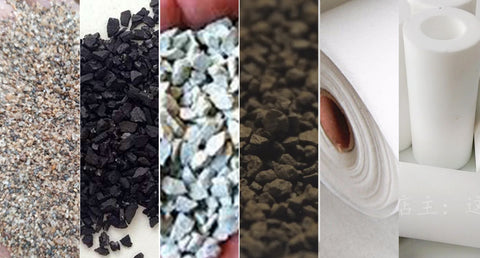
Activated carbon is a material or material that can be a material that has very many and wide pores. These pores function as an absorber of contaminants that pass through them. That is, if water is filtered with activated carbon, contaminants in the water can enter the pores and be trapped in them. In this case, if made into numbers, as much as 450 grams of activated carbon can contain about 40 hectares of surface zone.
How it Works
Activated carbon works by absorption. This means that when any material passes through activated carbon, the material contained in it will be absorbed. So do not be surprised if this material is able to remove some bad substances from polluted water. Indeed, it can purify cloudy water while removing unpleasant odors from water.
Materials Used
To make activated carbon, you can use several materials. Among them are;
-
Animal-based materials
-
Plant material
- Materials
-
Coconut pegs
-
Coconut shell or hazelnut shell
-
Oil palm shell or peel
-
Coal
-
Bone, etc
Many natural ingredients are used to make activated carbon. However, recent technologies/innovations can also find a way to make activated carbon using certain chemicals.
Uses
The function of activated carbon in waterways can definitely be felt by people in big cities, especially those who have been utilizing waterways, both simple and mechanical / technological. Some of the benefits provided by activated carbon for waterways and water purifiers are;
1. Deodorizes
Well water that smells will be treated with activated carbon or activated charcoal. This material is used in some water purification products.
.
2. Purifying Water
Cloudy water can also be resolved by utilizing activated carbon. Specifically by utilizing expansive pores to retain sedimentation or deposits contained in the water.
.
3. Removing Chlorine
Chlorine in water can be absorbed by activated carbon. In this way, this strategy is considered safe to provide drinking water fit for consumption.
4. Making Water Taste Fresh
Bland and bad tasting water can be anticipated with activated carbon. In this case, activated carbon can create a fresh & refreshing taste & feel to the water.
5. Non-absorbable Ingredients
While many contaminants can be adsorbed, it turns out that activated carbon can also release some waterborne substances, including minerals, salts, and inorganic compounds.
Therefore, the utilization of activated carbon in waterways should be collaborated with other innovations to remove contaminants that cannot be absorbed by it.
.Carbon filtration is a filtration strategy that utilizes an activated carbon to remove contaminants and impurities, using chemical adsorption. Each piece of carbon is designed to supply most of the surface zone, to allow the most likely presentation of contaminants to the filter media. One pound (454g) of activated carbon contains a surface area of approximately 100 acres (1 km²/kg) This carbon applies mostly with a positive charge and is decomposed to attract negatively charged water contaminants.

.png?width=50&height=50&name=Logo_Watermart_Perkasa-removebg-preview%20(1).png)


